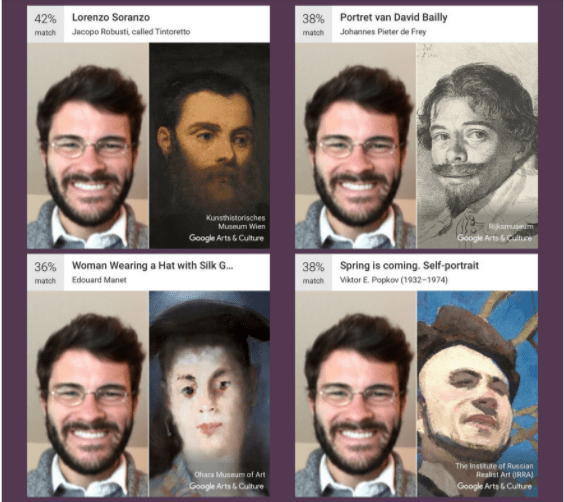With two simple questions, Google’s Arts and Culture App sparked a fascinating trend:
“Is your portrait in a museum?”
“Take a selfie and search thousands of artworks to see if any look like you.”
The 2-year-old App began as an attempt to offer tours and artwork from over 1,000 museums, but the recent feature immediately made it one of the most popular Apps in both iOS App Store and Google Play. But, why?
The Face Match feature invites users to take a selfie of themselves, then it compiles a list of artworks similar to your face—offering percentages of how similar the artwork is to the selfie. These side-by-side comparisons have gone viral often because they capture so striking a resemblance or because App’s limitations make the comparison at times so comically wrong.
Yet, this doesn’t quite explain the popularity of the trend—unless it’s about something more than just a selfie game. Perhaps, this is about appreciating our own beauty. Maybe we are fascinated by this side-by-side image of a selfie and a work of art, because we all want to believe deep down in our very bones: each of us is a work of art.
This isn’t just something similar to the #nofilter movement offering a raw glimpse into a moment, but the side-by-side comparison of selfie-vs-artwork makes a value statement: we stand beside art, or stated differently—we are more than the selfie; we are works of art.
In the same way, the artwork in the Google Arts and Culture App seeks to inspire a deeper appreciation of the power that art and beauty have to move us. It reminds us that “art” does not contain some sort of simple quantifiable value; it is a matter of appreciation, wonder, and awe. And perhaps, that is the most amazing thing about this trend: it invites us to look at ourselves and others as more than objects or portraits, but to see ourselves and others in comparison to artwork.
Despite our minor flaws, smudges, and even our shortcomings, we are more than just the images we post to Instagram. The very act of creating a pairing or comparison between ourselves and works of art, reminds us of something that we don’t often think or hear enough: we are beautiful and we are loved.
In some way, this trend might even invite us into a small understanding of the way in which God views us. As Anthony de Mello, SJ once encouraged: “Behold God beholding you… and smiling.” Imagine if we loved ourselves and others as much as God loves us, as wonderful works of art.
So, we can laugh at the comparisons. We can pause at the resemblances. We can giggle at the percentages. But hopefully, the trend invites us into a deeper understanding of the art of creation encapsulated not just in a museum but within ourselves.
-//-


